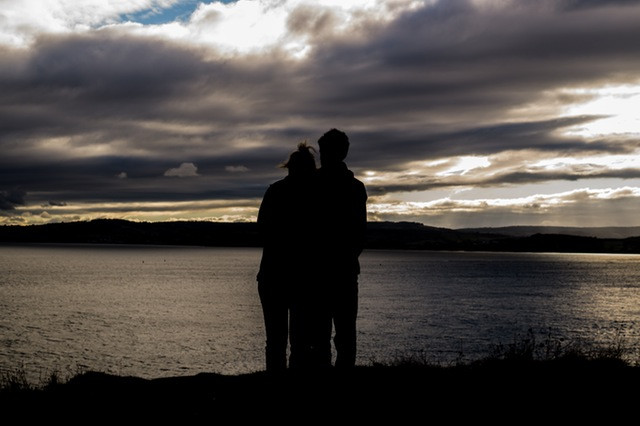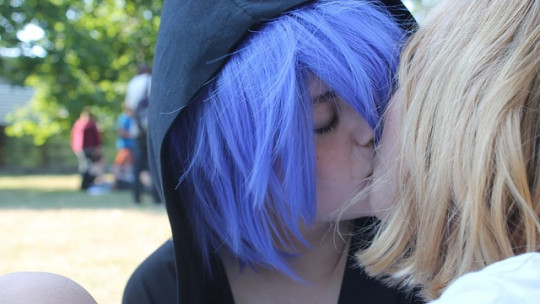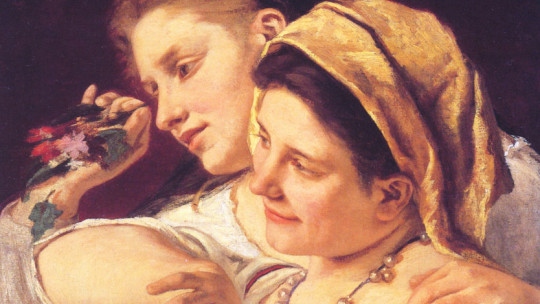The world is full of sexual orientations that they are still taboo (in the best of cases) or directly a reason for punishment (in the worst). However, the fact that in many cultures the freedom of individuals to feel attracted to whoever they want is beginning to be recognized does not mean that all of these orientations are coming to light equally and receiving the same attention.
To realize this, just look at how many people are familiar with the concept of pansexuality.
What is Pansexuality?
We were able to see a simulation of the typical reaction to the definition of pansexuality in one of the last (and worst) seasons of the British series
Skins. One of the characters, Franky Fitgerald was questioned about his sexual orientation at a moment that had to appear on the podium of the most interesting sequences of the season (note the level of quality).
The answer, which her confused companions had to accept and which could not be developed much further either textually or narratively, was this:
I’m into people. This phrase is very short, but it can serve to give you a basic idea of what it means to be labeled as pansexual
What is a pansexual person like?
Let’s start with the easy part: starting from a type of sexual orientation that is not very hegemonic to define an even less hegemonic sexual orientation. Take homosexuality as an example.
Whether coincidence or not, homosexuality is based on a distinction between two sexes, as is the form of sexual orientation that has overshadowed it for centuries: heterosexuality.
Both homosexuals and heterosexuals divide society into sexes to determine which is potentially attractive
Pansexual people, however, do not take into account the variable “sex”, or at least that is how they feel when considering the criteria by which they feel attracted to one person or another. This means that, although a pansexual woman may find another woman attractive, her preferences cannot be described by placing her on a scale with the extremes “greater tendency toward heterosexuality” or “greater tendency toward homosexuality,” because
rejects the distinction between man and woman that gives meaning to that measurement tool.
Pansexuality is, simply, a sexual orientation that is not governed by these parameters.

So, are pansexuality and bisexuality the same thing?
Not at all, although it is possible that there are people who declare themselves bisexual due to ignorance of the idea of pansexuality. They are similar sexual orientations, since
question the male/female dichotomy and its relationship with sexual attraction but there are nuances that keep them separate.
Someone who is bisexual is, in short, someone who can be attracted to people of both sexes. However,
Bisexual people define the sex of people by associating a gender burden with it : Women are feminine and men are masculine. It is important to take this into account because, although feeling attracted to both sexes may call into question the value of this criterion, bisexuals continue to recognize the existence of gender associated with sex as something important.
The difference between bisexuality and pansexuality is that in the latter, gender does not play an essential role either, that is, a set of roles, attitudes and behaviors that are considered masculine or feminine. Someone who is pansexual does not take into account either the sex of a subject or the way in which their behavior conforms more or less to one gender or another. She is simply attracted to people.
No, that cliché does not occur in pansexuals either.
Pansexual people
They consider that both sex and gender are empty concepts , but that does not mean that they are attracted to everyone. This myth according to which someone who is attracted to people of the same sex is attracted to everyone is also false in the case of pansexuality. Someone who defines themselves according to this sexual orientation is perfectly capable of feeling little attraction (sexual or of any kind) for the vast majority of people, and will not stop enjoying the company of a few individuals, regardless of their gender and sex. .
In that sense, it is possible that pansexuality implies
more openness towards people’s sexual appreciation , but not more openness towards all individuals in particular. This is an important nuance.
A silenced sexual orientation
Pansexuality may be a more romantic idea than homosexuality or heterosexuality, but it is also more shocking, more revolutionary. It is a challenge for the categories of sex and gender, and for that reason it is a difficult orientation to understand. It is not something that can easily become folklore, like that which makes up the stereotypes of the gay community, and therefore it is also more difficult to recognize, make visible, and fill with good amounts of
clichés and marketing.
Maybe that’s why, ironically, It is possible that here and there it is believed that pansexuality is a
fashion , a way to seek the attention of others. Perhaps that is why, even today, there are many people unable to assimilate the idea that it is possible to feel attracted to people, without more ado.









